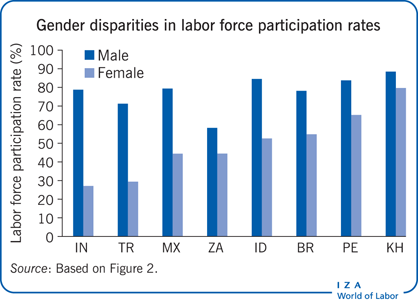Elevator pitch
While women’s labor force participation tends to increase with economic development, the relationship is not straightforward or consistent at the country level. There is considerably more variation across developing countries in labor force participation by women than by men. This variation is driven by a wide variety of economic and social factors, which include economic growth, education, and social norms. Looking more broadly at improving women’s access to quality employment, a critical policy area is enhancing women’s educational attainment beyond secondary schooling.

Key findings
Pros
Female labor force participation is an important driver (and outcome) of growth and development.
Women join the workforce in developing countries as a coping mechanism in response to shocks.
The participation of women is the outcome of various macro and individual factors.
Access to quality education (beyond secondary) is critical to improve employment outcomes for women.
Cons
In developing countries, high female labor force participation rates typically reflect poverty.
Women earn less than men and are more likely to be engaged in unprotected jobs, such as domestic work.
Education raises the reservation wage and expectations of women, but it needs to be matched by job creation.
Underreporting is common, so data on women’s participation rates do not accurately reflect women’s work.